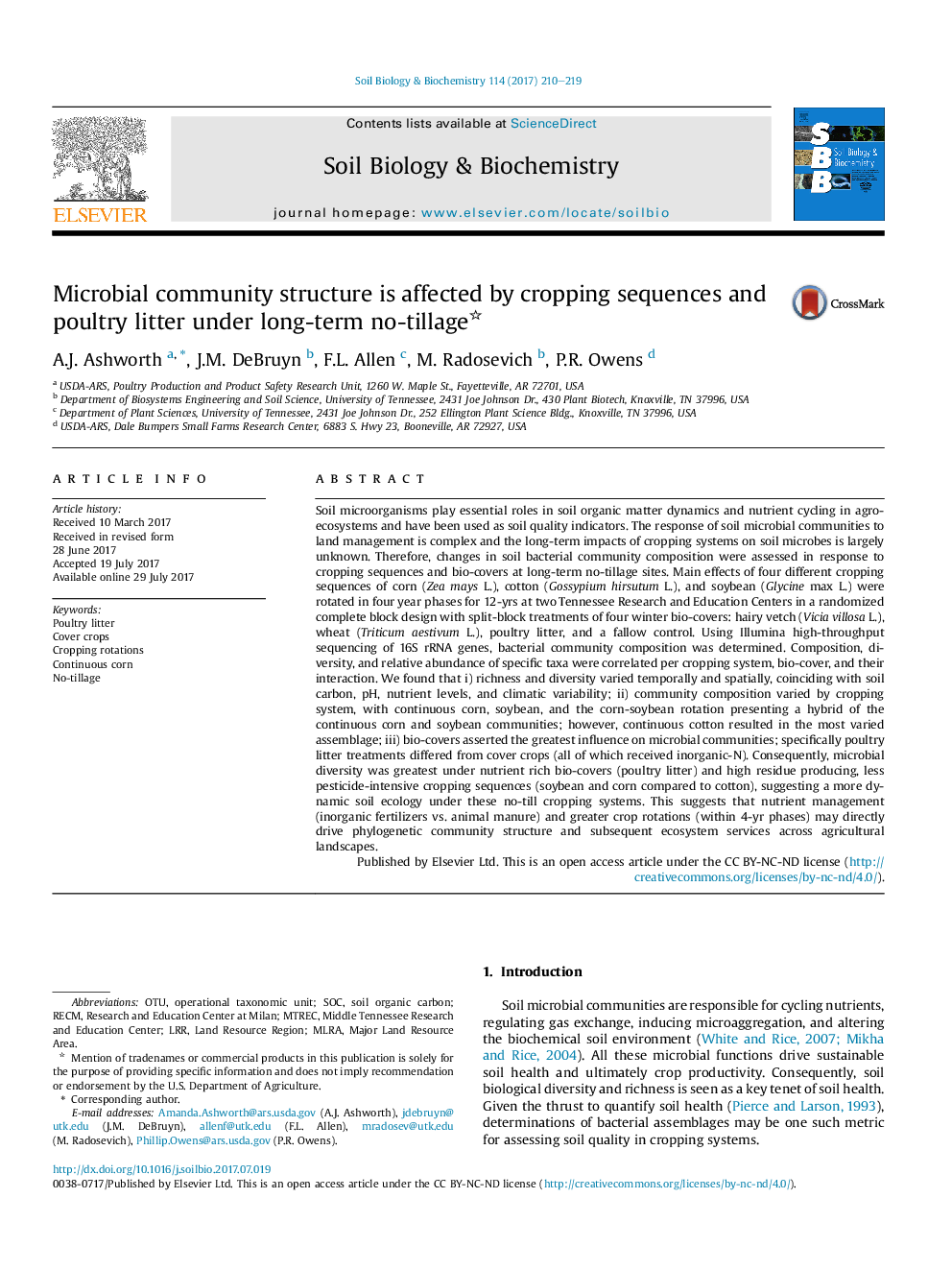| کد مقاله | کد نشریه | سال انتشار | مقاله انگلیسی | نسخه تمام متن |
|---|---|---|---|---|
| 5516321 | 1542570 | 2017 | 10 صفحه PDF | دانلود رایگان |
- Changes in soil microbes were assessed in response to cropping sequences and bio-covers.
- Diversity varied over time and space, coinciding with soil chemistry and climatic variation.
- Microbiomes varied by cropping system, with continuous cotton resulted in the most varied assemblage.
- Poultry litter treatments greatly affected communities compared to cover crops.
- Nutrient management and greater crop rotations drives microbial diversity.
Soil microorganisms play essential roles in soil organic matter dynamics and nutrient cycling in agroecosystems and have been used as soil quality indicators. The response of soil microbial communities to land management is complex and the long-term impacts of cropping systems on soil microbes is largely unknown. Therefore, changes in soil bacterial community composition were assessed in response to cropping sequences and bio-covers at long-term no-tillage sites. Main effects of four different cropping sequences of corn (Zea mays L.), cotton (Gossypium hirsutum L.), and soybean (Glycine max L.) were rotated in four year phases for 12-yrs at two Tennessee Research and Education Centers in a randomized complete block design with split-block treatments of four winter bio-covers: hairy vetch (Vicia villosa L.), wheat (Triticum aestivum L.), poultry litter, and a fallow control. Using Illumina high-throughput sequencing of 16S rRNA genes, bacterial community composition was determined. Composition, diversity, and relative abundance of specific taxa were correlated per cropping system, bio-cover, and their interaction. We found that i) richness and diversity varied temporally and spatially, coinciding with soil carbon, pH, nutrient levels, and climatic variability; ii) community composition varied by cropping system, with continuous corn, soybean, and the corn-soybean rotation presenting a hybrid of the continuous corn and soybean communities; however, continuous cotton resulted in the most varied assemblage; iii) bio-covers asserted the greatest influence on microbial communities; specifically poultry litter treatments differed from cover crops (all of which received inorganic-N). Consequently, microbial diversity was greatest under nutrient rich bio-covers (poultry litter) and high residue producing, less pesticide-intensive cropping sequences (soybean and corn compared to cotton), suggesting a more dynamic soil ecology under these no-till cropping systems. This suggests that nutrient management (inorganic fertilizers vs. animal manure) and greater crop rotations (within 4-yr phases) may directly drive phylogenetic community structure and subsequent ecosystem services across agricultural landscapes.
Journal: Soil Biology and Biochemistry - Volume 114, November 2017, Pages 210-219
